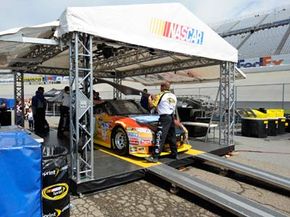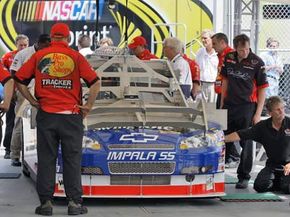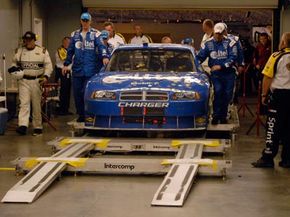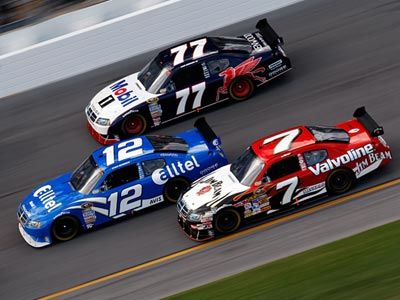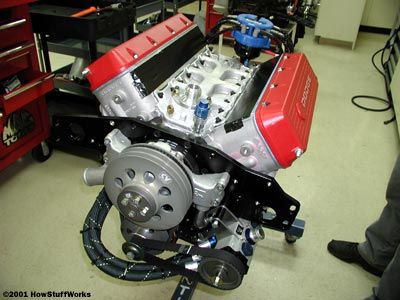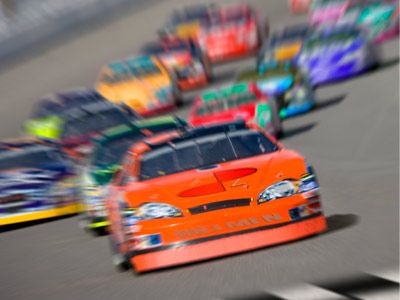It's 10 a.m. on Sunday at Atlanta Motor Speedway, and the NASCAR garage is bustling with activity. On the south end of the long, steel garage building, four NASCAR inspectors roll car after car through the inspection line for one last look at the sleek machines that will soon turn the peaceful morning into five hours of continuous thunder.
The teams roll the cars onto an elevated platform where two of the inspectors will fit a long aluminum template over the nose, roof and trunk of the car. The inspector at the front end slides a small guide between the template and the hood while the other inspector, the one near the rear of the car, does a final check of the rear wing. Meanwhile, another gentleman places a flat piece of aluminum along the side of the car.
Advertisement
Before the car rolls off the platform, a team member crawls through the window and pounds on the sheet metal from inside using a heavy rubber mallet. Apparently, something doesn't jibe and the inspectors won't release the car until it does.
Finally, the car rolls off the platform and another takes its place. One by one, each competitor will take their turn on same stage. As the cars roll off, they join the starting grid and soon 100,000 fans will cheer for their favorite driver in the Pep Boys 500, the seventh race in NASCAR's Chase for the championship.
Forty-three cars take the track each NASCAR race day. Before a single lap is turned, every car must pass a series of rigorous inspections under the watchful eye of Sprint Cup director of competition John Darby and his team of skilled watchdogs. The same inspectors serve as referees during the race who scrutinize cars as they come off the track. This article will explain both the pre-race and post-race inspection process as well as give some examples of cars that fail to make the grade.
What happens when a car doesn't pass inspection? Does the winning driver lose his trophy if NASCAR finds something amiss after the race? These answers and more lie ahead. Let's begin with pre-race inspections in the next section.
Advertisement
